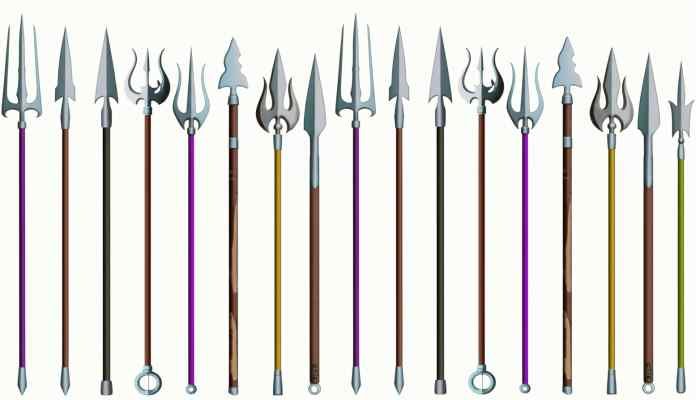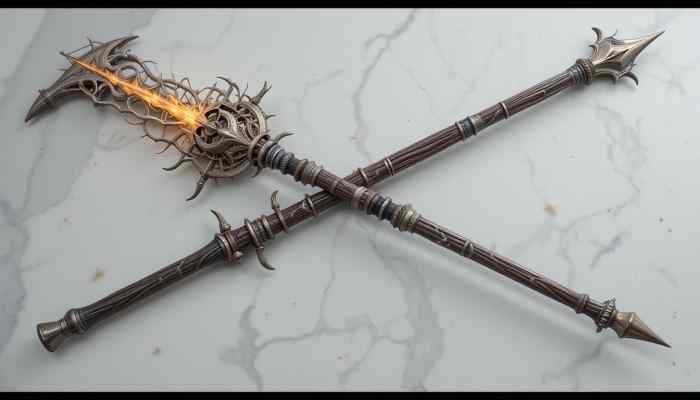Pike Weapon: History, Use, and Legacy in Warfare

- Introduction to the Pike Weapon
- History of the Pike Weapon
- Anatomy of a Pike Weapon
- How the Pike Was Used in Battle
- Advantages and Disadvantages of the Pike Weapon
- Pike and Shot Formations: Evolution in Warfare
- Famous Pike Units in History
- Decline and Legacy of the Pike Weapon
- The Pike in Modern Culture
- Conclusion: The Enduring Symbol of the Pike Weapon
Introduction to the Pike Weapon
The pike weapon is one of the most iconic tools of warfare from the ancient to early modern periods. A pike is a type of polearm, typically ranging from 10 to 20 feet in length, designed for use by infantry soldiers. Unlike a traditional spear meant for throwing or short-range stabbing, the pike was used to form walls of sharp points, capable of stopping cavalry charges and overwhelming foot soldiers.
In military history, pikes were particularly effective in formation-based tactics. When grouped tightly, pikemen could create nearly impenetrable lines, making them essential during large-scale land battles. The pike was not a weapon of finesse, but of function. It relied on discipline, training, and teamwork among soldiers to be truly effective.
Though pikes eventually became obsolete with the rise of gunpowder weapons, their impact on battlefield strategy, formation combat, and military evolution remains significant. Understanding the pike weapon gives us deep insight into how war was fought before the era of firearms.
History of the Pike Weapon
The history of the pike weapon spans several centuries and cultures, evolving alongside the changing nature of warfare. The earliest versions can be traced back to ancient Greece, where long spears called sarissas were used by the Macedonian phalanx under Philip II and Alexander the Great. These formations relied heavily on discipline, creating rows of pikes to deter enemy charges.
During the Middle Ages, pikemen reemerged as essential players on the battlefield. In 14th and 15th century Switzerland, pike-wielding soldiers gained fame for defeating mounted knights, proving that well-trained infantry could counter cavalry. This success led to widespread adoption of pike tactics throughout Europe.
The Renaissance period saw the height of pike warfare. In conjunction with early firearms, formations such as the “pike and shot” became common. Pike units protected musketeers from cavalry while providing defensive strength.
However, by the 18th century, improvements in firearms and bayonet technology rendered the pike obsolete. It faded from modern warfare but left a lasting legacy in military training and tactics.
The pike weapon’s history showcases the power of strategic formation, influencing armies across Europe and beyond.
Anatomy of a Pike Weapon
Understanding the structure of a pike weapon helps explain why it was so effective in warfare. Though simple in appearance, its parts were purposefully designed for use in mass infantry combat.
Main Components:
Shaft:
Made of hardwood (usually ash or oak)
Length ranged from 10 to 20 feet
Strong yet flexible for absorbing shock
Spearhead:
Crafted from forged steel
Often leaf-shaped or spike-like
Designed to puncture armor or horse flesh
Butt Spike (Shoe):
Metal cap at the opposite end
Provided counterbalance and could be used to anchor the pike to the ground
Physical Characteristics:
Weight: Typically between 4 to 8 lbs
Grip: Often wrapped in leather or cord to enhance handling
No cross-guard: Unlike swords, pikes relied on range, not blocking
The pike’s long reach and dense formation use made it a powerful but specialized battlefield tool. It required both hands to wield and wasn’t suitable for close quarters without formation support.
Also Read: GunBroker Guide 2025: Buy, Sell, and Ship Guns Online
How the Pike Was Used in Battle
The pike was not designed for individual combat but rather for organized infantry warfare. Its strength lay in coordination, discipline, and numbers. Here’s how it was typically used on the battlefield:
Tactical Use of the Pike – Step by Step:
Forming Dense Infantry Lines:
Soldiers would align shoulder-to-shoulder in tight, rectangular blocks, often several rows deep.Lowering the Pike for Defense:
As cavalry or enemy infantry approached, pikemen would lower their weapons to waist level, presenting a bristling wall of steel tips.Maintaining Formation Discipline:
The key to success was holding formation under pressure. Breaking ranks made the unit vulnerable to flanking or cavalry charges.Advancing as a Wall:
Trained pikemen could slowly advance in unison, pressing the enemy back while maintaining their defense.Using Rear Ranks for Support:
In deeper formations, rear ranks kept their pikes elevated until the front ranks fell or shifted, ensuring continuous pressure.
These formations were particularly effective against cavalry, whose momentum would be broken against the unyielding front of spears.
Advantages and Disadvantages of the Pike Weapon

The pike-weapon came with clear benefits and major limitations, which influenced how it was used in battle.
Advantages:
Long Reach: Could engage enemies at a distance before they got close.
Anti-Cavalry Power: Ideal for stopping horse charges.
Formation Strength: In groups, pikes formed impenetrable walls.
Intimidation Factor: A sea of pikes could psychologically demoralize opponents.
Disadvantages:
Close-Combat Weakness: Useless in tight quarters without formation.
Mobility Issues: Difficult to maneuver through forests or urban environments.
Vulnerable to Gunfire: Ineffective against ranged firearms once muskets became dominant.
Heavy Training Required: Success depended on highly disciplined troops.
In essence, the pike’s strength came from formation warfare, but it was poorly suited for individual use or rapidly changing battlefield conditions.
Pike and Shot Formations: Evolution in Warfare
As firearms became more common in the 16th and 17th centuries, military strategists needed to balance the offensive power of muskets with the defensive strength of pikes. This gave rise to the famous “pike and shot” formation, a revolutionary combined-arms tactic.
In these formations, musketeers were arranged around blocks of pikemen. The musketeers delivered volleys of gunfire from a distance, while the pikemen protected them from enemy cavalry and close assaults. It was a tactical marriage of firepower and defense. The result was a battlefield formation that could stand firm against charges while still inflicting ranged damage.
One of the most notable users of this tactic was Gustavus Adolphus of Sweden, who modernized his army by increasing musket ratios while maintaining disciplined pike squares. Over time, however, improvements in bayonet technology made it possible for musketeers to defend themselves without pikemen, leading to the pike’s gradual phase-out.
The pike and shot era marked the transition between medieval melee warfare and modern gunpowder armies, showcasing the pike’s last great stand in military history.




